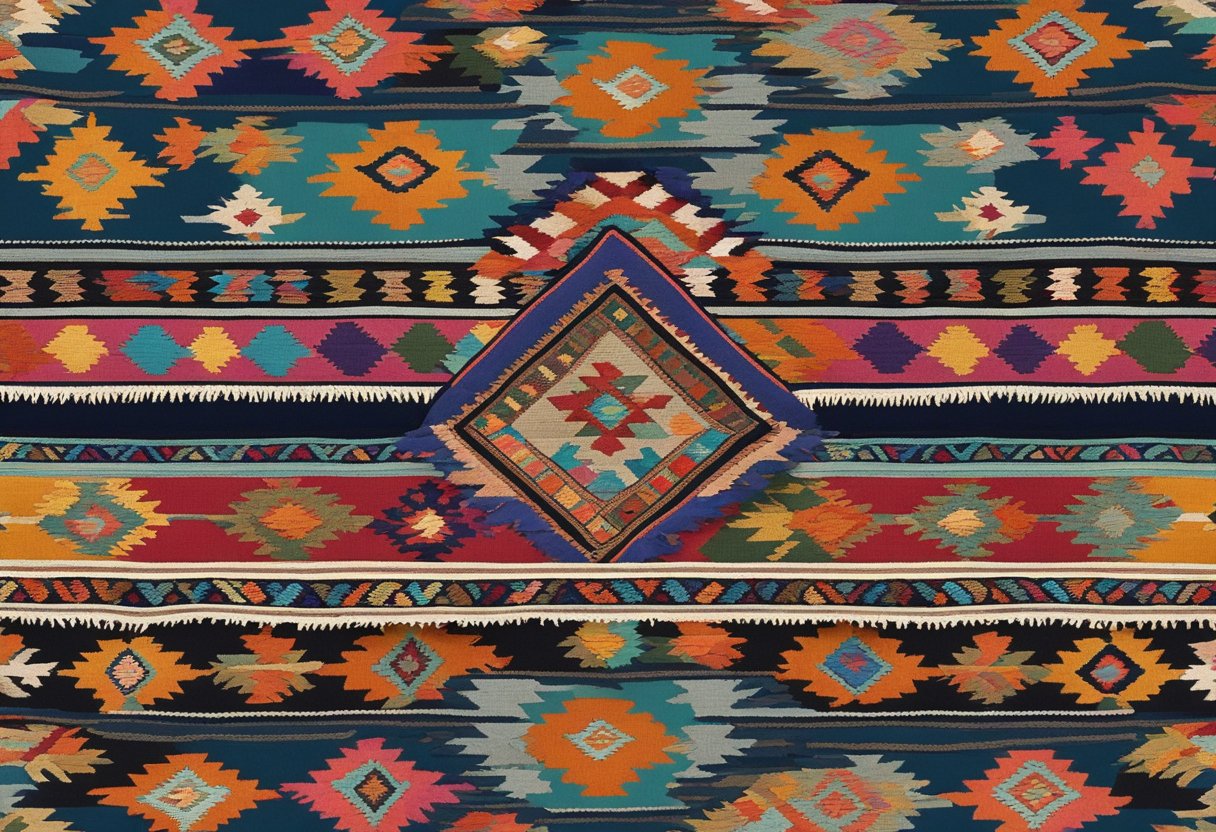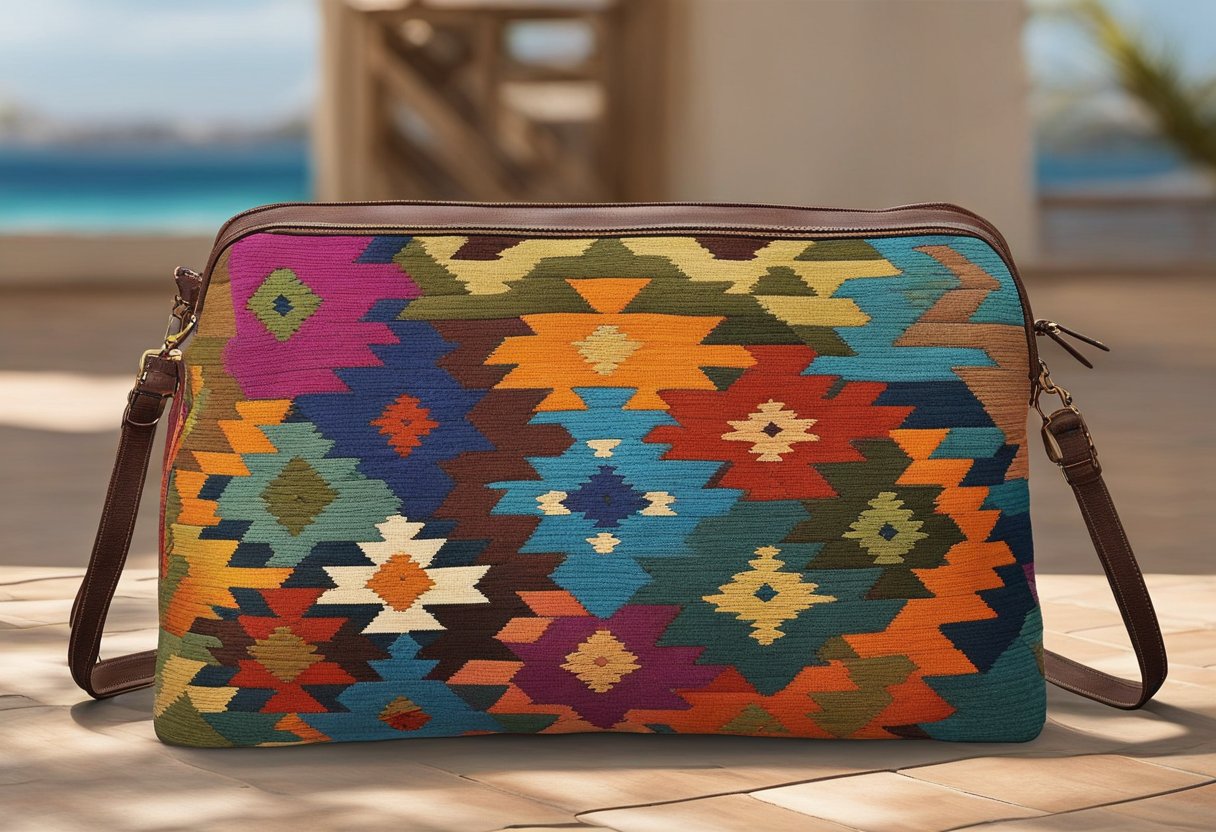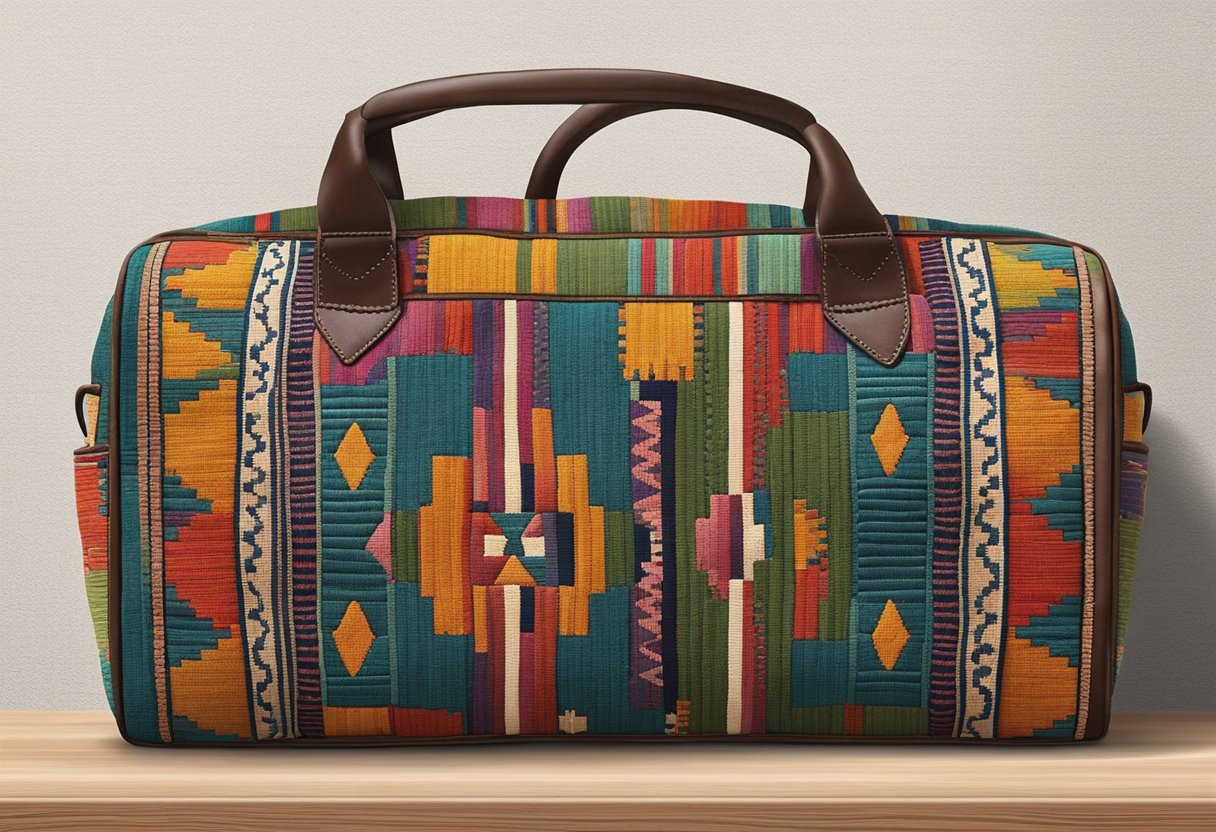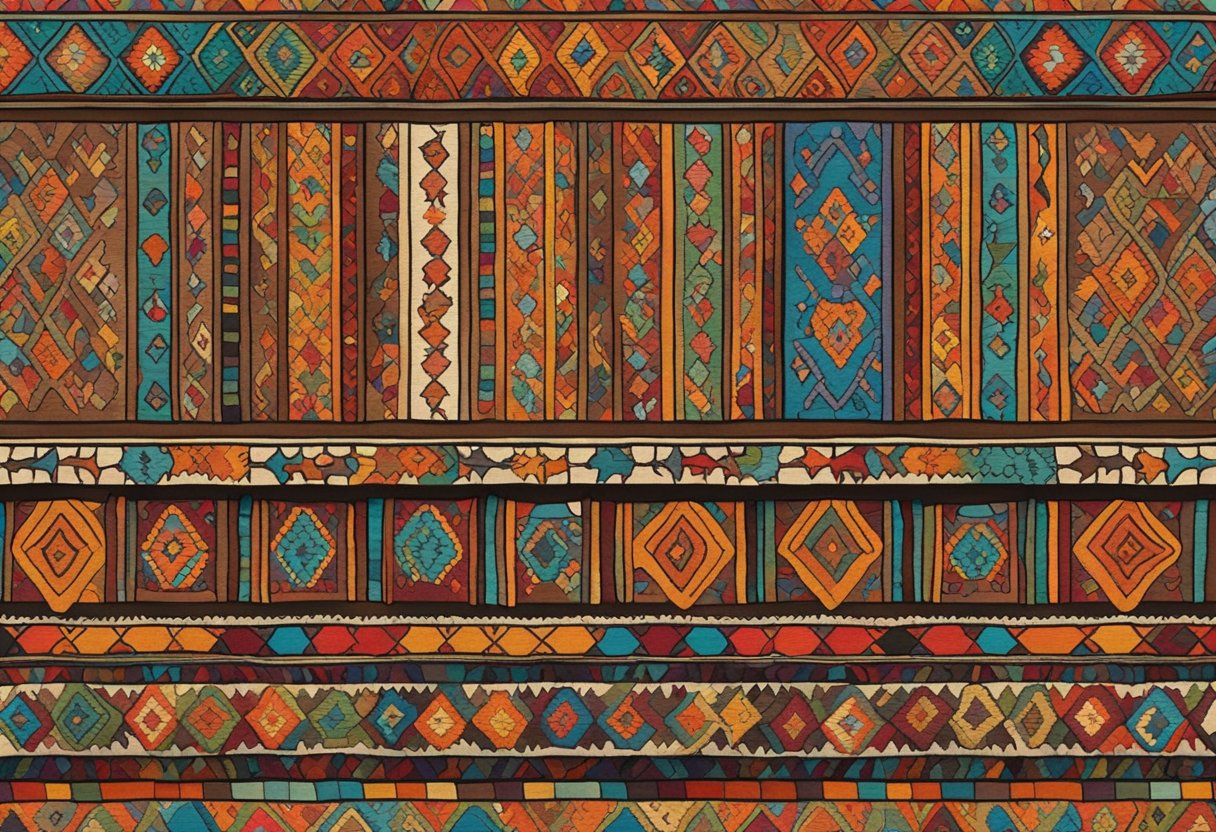What Makes Turkish Kilim Bags Different From Other Handmade Bags: Unique Craftsmanship and Cultural Heritage

Turkish Kilim bags offer a unique charm that sets them apart from other handmade bags. These bags are steeped in history and culture, reflecting the rich, colorful heritage of Turkey and the surrounding regions. Hand-woven using ancient techniques, Kilim textiles feature intricate patterns and vibrant colors that cannot be replicated by modern machinery.
In addition to their historical significance, Kilim bags have become popular fashion items due to their sophisticated aesthetic appeal. They seamlessly combine style and substance, making them a versatile accessory for any occasion. Their distinct flat weave and lack of pile give them a unique texture, further enhancing their appeal.
Turkish Kilim bags stand out for their craftsmanship and intricate patterns, making each piece a work of art. They are not just accessories but statements of cultural heritage and skilled craftsmanship. Whether used as a shoulder bag or a travel accessory, a Kilim bag offers both functionality and a touch of elegance.
History and Origins

Kilim bags have deep historical roots in the rich cultural tapestry of Turkey. These bags are distinctive because of their unique weaving patterns, cultural symbolism, and regional variations.
Evolution of Kilim Weaving
Kilim weaving dates back to ancient times, originating in parts of Anatolia, Turkey, and other regions of the Middle East. Initially, kilim textiles were made using simple, pileless weaving techniques. Early kilims served practical purposes, such as floor coverings and storage. Over centuries, the craft evolved. The weavers began to incorporate geometric patterns and bright colors, shifting kilims from purely utilitarian objects to items with aesthetic and symbolic significance. The weaving techniques and designs have passed down through generations, preserving the heritage.
Cultural Significance in Turkey
In Turkey, kilim holds significant cultural value. Each pattern and color used in kilim weaving carries meaning, often representing themes such as fertility, protection, and prosperity. Kilim bags embody more than just craftsmanship; they express cultural narratives and symbols. Turkish communities have used kilims in various forms, including prayer rugs, wall hangings, and bags. This practice reflects the deep emotional and historical connections people have with these textiles. They are not just functional items but also carriers of stories and traditions.
Distinct Regions of Kilim Production
Different regions in Turkey contribute unique styles to kilim weaving. Anatolia, in particular, is renowned for its intricate and diverse kilim patterns. Each area within Anatolia has its own distinct weaving methods and motifs.
Other notable regions include the Caucasus, known for their vibrant and bold designs, and Central Asia, where more symmetrical and muted patterns are prevalent. The variations in design and technique speak to the distinct cultural influences and historical developments within each region, making kilim bags a rich and diverse cultural artifact.
Materials and Craftsmanship

Turkish Kilim bags stand out for their unique materials and meticulous craftsmanship. The use of premium textiles, skilled artisans, and traditional weaving techniques contribute to their distinctiveness.
Textile Quality and Natural Dyes
Kilim bags primarily use high-quality wool and cotton fibers. These materials are known for their durability and comfort. Wool, often hand-spun, provides a sturdy base while cotton adds flexibility. Natural dyes derived from plants, roots, and insects give Kilim textiles their vibrant colors. These dyes not only offer rich, varied hues but also ensure that the colors last longer without fading. The choice of natural dyes reflects a commitment to sustainability and tradition.
Artisans and Weaving Techniques
Skilled artisans, often from families with generations of weaving experience, create Kilim bags. They use time-honored techniques passed down through the years. Each artisan brings their own touch, making every bag unique. Weaving techniques involve intricate patterns and careful attention to detail. The artisans often work with small, hand-operated looms. This manual process adds to the authenticity of each piece, ensuring that no two bags are exactly alike.
Warp and Weft: The Foundation of Durability
The strength of Kilim bags lies in the warp and weft threads. The warp threads run vertically and are the backbone, providing structural integrity. The weft threads, woven horizontally, form the pattern and add to the bag's strength. The interlocking of warp and weft creates a flat weave, which is a signature of Kilim textiles. This method results in a durable fabric that can withstand daily use. The careful selection and weaving of these threads ensure the longevity of each bag. The high quality of textiles, skilled artisans, and traditional weaving methods make Turkish Kilim bags unique. They are not just accessories but also artifacts of cultural significance.
Design and Aesthetic Qualities

Turkish Kilim bags stand out for their vibrant colors, intricate patterns, and rich symbolism. Their unique design elements make them both visually appealing and culturally significant.
Symbolism in Kilim Patterns
Kilim patterns often carry deep meanings. Symbols like the “ram’s horn” signify strength and protection. The “eye” motif is believed to ward off evil, providing safety to the wearer. In these bags, each motif is carefully chosen. For instance, the burdock plant's motif symbolizes abundance and flourishing life. These symbols connect the bag to cultural heritage and add layers of significance to its design.
Color Influence and Aesthetic
The colors in Kilim bags are not just for looks. Natural dyes create bright reds, deep blues, and vivid yellows. These colors are both eye-catching and historically important. Shades used in Kilim bags often symbolize specific things. Red might represent bravery, while blue could stand for peace. The combination of these vibrant, meaningful colors makes each bag unique and aesthetically pleasing.
Shapes and Geometric Designs
Kilim bags feature a variety of geometric shapes and designs. Triangles, diamonds, and hexagons are commonly seen. These shapes are arranged in patterns that can be both symmetrical and asymmetrical, adding to the complexity. Geometric designs in Kilim bags are not just random. Each shape can have a meaning, like triangles representing femininity or diamonds suggesting protection. The careful arrangement of these geometric patterns gives the bags their unique and intricate appearance.
Functional Aspects

Turkish Kilim bags offer a unique blend of versatility and durability that sets them apart from other handmade and machine-made bags. Made using traditional methods, they provide functionality while preserving cultural heritage.
Versatility in Use and Style
Kilim bags are incredibly versatile. They can be used as handbags, tote bags, or even travel bags. Their lightweight nature makes them practical for everyday use. Each bag's unique design ensures that it's also a stylish accessory, perfect for both casual and formal settings. Additionally, kilim bags come in various shapes and sizes, making them suitable for different occasions. They blend well with contemporary outfits while also complementing traditional attire, enhancing their appeal across different demographics.
Advantages Over Machine-Made Bags
One key advantage of Kilim bags is their durability. Handwoven using wool, cotton, or silk, they tend to be more robust than many machine-made bags. This durability translates to longer-lasting functionality, making them ideal for daily use.
Machine-made bags often lack the personal touch and attention to detail found in handmade kilim bags. Kilim bags' flat-weave technique not only adds to their strength but also provides a unique texture that machine-made bags cannot replicate. This makes each bag a genuine piece of art that stands out for its craftsmanship. In contrast, machine-made bags are typically mass-produced, lacking the longevity and cultural value that kilim bags inherently possess.
Kilim Bags in Modern Fashion
Kilim bags are making a big impact on global fashion trends. These bags combine traditional weaving techniques with modern designs to create unique, eye-catching fashion statements.
Influence on Global Fashion Trends
Kilim bags have become popular worldwide. They are often seen in fashion hotspots like New York, Paris, and Tokyo. Designers are incorporating kilim fabrics into high-end and casual handbags, tote bags, and messenger bags. This popularity is due to their vibrant patterns and rich cultural history, which add a touch of uniqueness to any outfit. Fashion influencers and celebrities have contributed to this trend by showcasing kilim bags on social media and at public events. This exposure has made them a must-have accessory for many fashion-forward individuals who seek to stand out from the crowd.
Combining Tradition with the Modern World
Kilim bags blend centuries-old weaving techniques with contemporary styles. Traditional motifs such as geometric shapes and vibrant colors are adapted into modern handbag designs like barrel bags and shoulder bags. This fusion creates a versatile accessory that is both stylish and deeply connected to cultural roots.
Artisans continue to use time-honored methods to craft these bags, ensuring each piece is unique. As a result, kilim bags allow individuals to express their personal style while also appreciating the craftsmanship and history behind each bag. The adaptability of kilim fabrics makes them suitable for various seasons and trends, keeping them relevant in an ever-changing fashion landscape.
Sustainability and Ethical Considerations
Turkish Kilim bags are not only beautiful but also emphasize sustainable and ethical practices. These practices ensure minimal environmental harm and provide support to skilled artisans.
Eco-Friendly Practices in Kilim Bag Production
Kilim bags often use natural dyes made from plants, insects, and minerals. This approach minimizes chemical waste and pollution. The textiles are primarily hand-woven, reducing the reliance on industrial machinery that consumes energy and produces emissions. Many producers prioritize using sustainable materials, such as organic cotton and wool. Recycled materials are also becoming common, ensuring that waste is kept to a minimum. This helps in making the entire production process more eco-friendly and in reducing the overall carbon footprint.
Supporting Skilled Artisans and Communities
Skilled artisans play a crucial role in creating Kilim bags. Many of these artisans have honed their craft over generations, passing their skills down through family lines. This not only preserves traditional craftsmanship but also helps maintain cultural heritage. Buying Kilim bags often means supporting local communities. The ethical aspect of this practice ensures that artisans receive fair wages and work in good conditions. This support can help uplift entire communities, allowing for economic growth and better standards of living for the families involved in the craft. Shoppers can feel confident that purchasing a Kilim bag contributes positively to both the environment and the lives of the artisans who carefully create each piece. These practices underscore the importance of sustainability and ethical responsibility in the production of these unique, handmade items.
Purchasing and Maintaining Kilim Bags
When buying and caring for a Turkish kilim bag, it's essential to know where to get authentic pieces and how to keep them in great condition.
Where to Find Authentic Kilim Bags
Authentic kilim bags can be found in specialty shops like Little Istanbul Gifts, known for their genuine Turkish items. Online platforms, such as Etsy, also offer vintage and handmade kilim bags. Choosing reputable sellers ensures the bags are made with high-quality materials like 100% wool and genuine leather. The designs often reflect the rich cultural heritage of Turkey. It’s a good idea to check product reviews and seller ratings to avoid counterfeit products.
Care Tips for Long-lasting Use
To ensure your kilim bag lasts for years, proper care is necessary.
Regular Cleaning: Dust and dirt can be removed using a soft brush. For deeper cleaning, a gentle soap solution and a damp cloth can be used, but avoid soaking the bag.
Storage: Keep the bag in a cool, dry place. Avoid direct sunlight, which can fade the colors. When not in use, store the bag in a breathable fabric cover.
Handling Spills: If there are any spills, act quickly. Blot the area with a clean cloth, and never rub, as this can damage the fabric. By following these tips, a Turkish kilim bag can remain a stylish and functional accessory for a long time.




